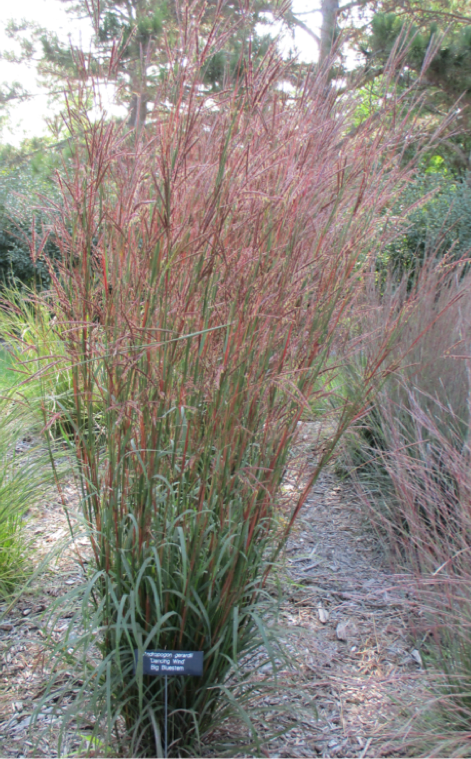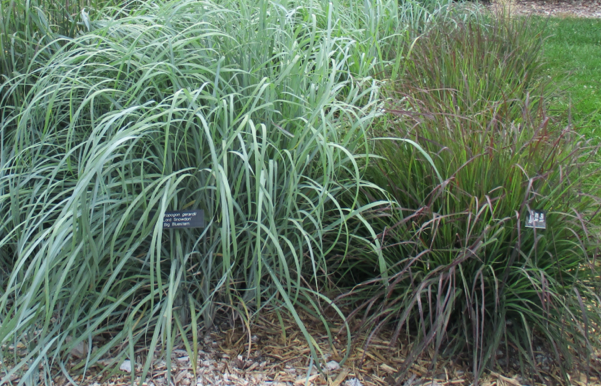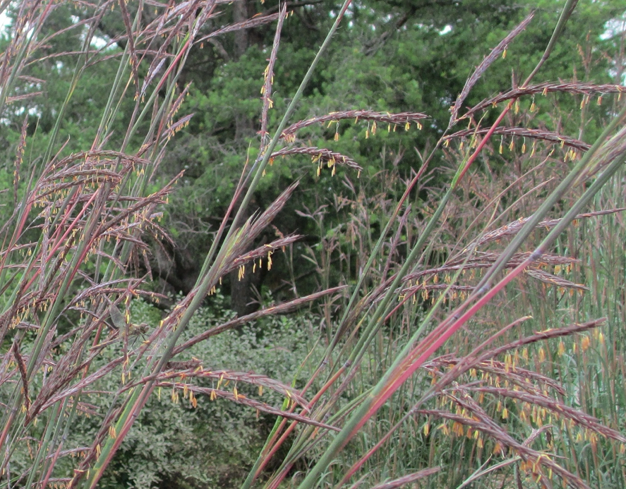3.1: Big bluestem
- Page ID
- 91476

Andropogon gerardii
Warm season; Perennial
Characteristics: 4–8’; upright open; flowers purple; foliage blue-green; fall color
Growing Conditions: average to wet soils; full sun; hardy zones 3–8
Big bluestem is one of the dominant grasses of the tallgrass prairie. An upright bunch grass, the foliage changes color from blue-green to rich bronze in the fall. The inflorescence is 3-branched and is commonly said to resemble a turkey foot. Each branch has a purple spike that turns bronze in the fall.
Nativars:
- ‘Blackhawks’: Foliage is darker purple than other nativars. Foliage starts dark green and takes on purple tones by midsummer, turning completely dark purple by fall. Can be susceptible to rust.
- ‘Dancing Wind’: Reddish copper stems and flowers, turns purple and dark red in the fall.
- ‘Indian Warrior’: Dark purple foliage and flowers, becomes open spreading with age.
- ‘Rain Dance’: Foliage and flowers are purple with red tips. Foliage becomes maroon in the fall.
- ‘Red October’: Red foliage in summer and fall
Associated Lepidoptera:
Species that feed on big bluestem according to the literature are Oslar’s roadside skipper (Amblyscirtes oslari), Delaware skipper (Anatrytone logan), Arogos skipper (Atrytone arogos), dusted skipper (Atrytonopsis hianna), wheat head armyworm (Faronta diffusa), Dakota skipper (Hesperia dacotae), cobweb skipper (Hesperia metea), Ottoe skipper (Hesperia ottoe), Indian skipper (Hesperia sassacus), Newman’s borer (Meropleon ambifusca), and byssus skipper (Problema byssus).




